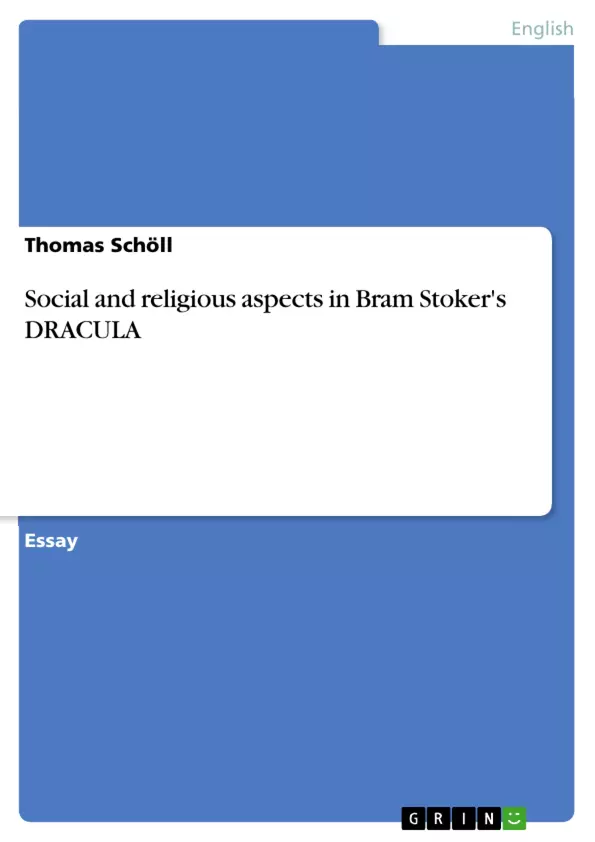1. Background to the time the story was written
To reveal the social background of Bram Stoker's "Dracula" , as well as the aspects of religion and science that influenced on society, we have to consider the events of that time. "Dracula" was written in the year of 1897. It was the so-called Victorian Age that was expressed by a high morality which was especially celebrated by the upper class who more than ever felt superior towards the poor working classes. It was a time when great social and economical problems struck society, especially its poor levels. But it also was a time of great scientific progress that lead to an upper society becoming richer and the working class remaining poor. The final result was a strong belief in materialism on the side of those who considered scientific progress as important and positive and a growing interest in Roman Catholicism, parapsychology and spirituality on the side of those who were more sceptic towards science and materialism. Society was more and more divided into rich and poor and the problems on the side of the poor increased. That was one reason why the church lost its power and influence on the majority of the society. Another reason for this was Gladstone's "Disestablishment Act".
But it was also a time when England invaded other countries to increase their number of colonies that could be exploited.
[...]
Table of Contents
- Background to the time the book was written
- Social Aspects: Characters in Society
- Lord Godalming
- Jonathan Harker
- Dr. Seward
- Quincey Morris
- Women in Society
- Religious Aspects
Objectives and Key Themes
This analysis aims to explore the social and religious aspects of Bram Stoker's "Dracula" by examining the novel's context and characters. It delves into the Victorian societal structures, particularly the upper class and their influence, as well as the evolving relationship between science and religion.
- Social Class Hierarchy and its portrayal in "Dracula"
- The Role of Religion in Victorian Society and its influence on the narrative
- The Impact of Science and Rationalism on the characters' perspectives
- The Position of Women in Victorian Society and their limited agency
- The International Dimension of the narrative and England's global influence
Chapter Summaries
The first chapter provides a comprehensive overview of the Victorian era, highlighting the social and religious context in which Bram Stoker wrote "Dracula." It explores the societal divisions between the wealthy upper class and the impoverished working class, emphasizing the growing influence of materialism and science, alongside a countervailing interest in spiritualism and Roman Catholicism. The chapter also examines the prevailing societal expectations and limitations imposed on women during this period, with a focus on their restricted roles within the household and their lack of autonomy.
Chapter two focuses on the portrayal of social class within the novel. It delves into the characters' positions within the upper echelons of society, such as Lord Godalming, Jonathan Harker, and Dr. Seward, highlighting their adherence to Victorian ideals of wealth, tradition, and societal expectations. The chapter explores how these characters embody the dominant values of their time, showcasing the importance of class hierarchy and the limited interactions between social strata. It also examines the inclusion of Quincey Morris, a Texan millionaire, as a representation of England's international connections and its desire for global influence.
Keywords
The primary keywords that encompass the core themes and focus of this analysis include Victorian society, class hierarchy, religion, science, rationalism, materialism, spirituality, women's role, internationalism, and social expectations.
- Quote paper
- Thomas Schöll (Author), 1995, Social and religious aspects in Bram Stoker's DRACULA, Munich, GRIN Verlag, https://www.grin.com/document/12106



